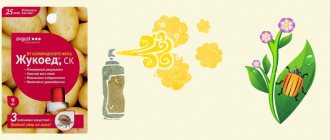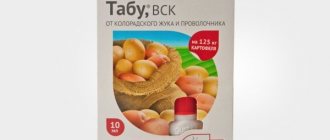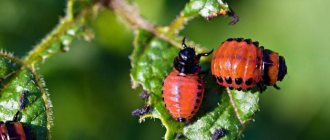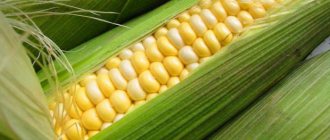712
The beloved potato has become the main food product for many millions of people in our country. The bulk of the harvest is harvested not on industrial plantations, but on personal plots of land. The agricultural technology of the vegetable is not simple, cultivation is labor-intensive. In addition, potatoes have their worst enemy - the Colorado potato beetle.
Its mass distribution occurred in the middle of the 20th century. At that time, people relied on the development of chemical science. Therefore, hopes for its extermination were associated with toxic chemicals. Nowadays, the question is different - who eats the Colorado potato beetle and what are its natural enemies?
Enemies from America
Attempts by scientists to adapt insects from the continent to the necessary climatic conditions did not lead to a positive result. Bugs: Podisus and Picromerus, could not take root in our area. And their seasonal breeding is extremely expensive and impractical. Therefore, farmers began to look for possible options for fighters among birds that live freely in the harsh climatic conditions of Russia.
Should you use domestic chicken to kill bugs?
According to practical experience, chickens are quite trainable in the matter of eating Colorado potato beetles. But this requires preliminary training, which in the future will allow the destruction of larvae and adults.
They need to be taught to eat insects from an early age - when the chickens reach three to four months of age. During this time, mix their favorite food, food with Colorado larvae.
This maneuver will make it possible not only to visually, but also tastefully associate pests with food. As a result, the chickens themselves will look for parasites in the garden and peck them.
Who eats the Colorado potato beetle?
Wild and domestic birds living close to humans often eat beetles and their larvae. The main thing is that breeding them at home is a more environmentally friendly way to exterminate the pest. It does not harm human health and the environment.
Who eats Colorado potato beetles:
- The easiest birds to raise and the most effective fighters are guinea fowl. Breeding them does not require much effort. They peck insects directly from the bush. And the most important thing is that, unlike chickens, they do not rake the beds and do not harm other plantings on the plots. They have dietary meat. They lay eggs that are hypoallergenic and do not cause reactions in children or adults. The Colorado potato beetle is a delicacy for the guinea fowl, like other insects that are found on the site. By teaching them to move freely around the area, you can clear it of many pests.
- The next bird that lives at home is the turkey. Just like guinea fowl, he willingly feeds on beetles directly from plants. But growing it is much more difficult. He gets sick often, little turkey poults are very tender. Therefore, caring for them requires a lot of attention and care. Otherwise, turkeys are very organized. They do not rake the beds, they feed on all sorts of insects, being a kind of orderlies for the site.
- Pheasants and partridges are wild birds that take a lot of work to raise. As for partridges, they are adapted to harsh climates. They are not very demanding regarding strict adherence to the rules of maintenance. They gain weight quickly, their meat is very tasty. The areas will definitely need to be closed. Because pheasants and partridges can easily fly away. And they never come back. If you leave them out for a walk, you shouldn’t leave them unattended; they trample down the plantings. In addition to the Colorado potato beetle, they perfectly destroy other pests that harm various crops.
- Domestic chickens. Only selected individuals, or those that have previously been trained from a young age, can exterminate the pest.
See also
Instructions for using the remedy for the Colorado potato beetle SonetRead
Which birds eat beetles best and are easiest to breed? The answer is ambiguous, different for each person. Everything will depend on the gardener himself, his desires and aspirations.
Who else eats a bug?
The American pest has a lot of natural enemies that destroy not only adult individuals, but their larvae and yellow eggs.
- Perillus bug. It at any stage of development (adults or larvae) eats the potato leaf beetle. During the period of its development, a bedbug larva is capable of destroying about 250 eggs. An adult bedbug eats about 3000-3500 eggs over its entire life cycle.
- American bedbug. Actively feeds on the Colorado potato beetle. He is able to eat about 70 eggs per day. Podisus also feeds on larvae.
- Grasshoppers. These insects are omnivores. They eat various insects, including the main potato pest. Grasshoppers are widespread, so they can become a real threat to Colorado.
- Ground toad. This is a real threat to insects that are in the ground. In addition to the potato pest, the toad eats the mole cricket with appetite.
In the homeland of potatoes there are no big problems, since natural enemies there cope with the Colorado potato beetle. In the Russian climate, everything is a little more complicated. But there are a number of insects in nature that feed on the potato leaf beetle.
In addition to the listed enemies, ants, side-walking spiders, and ground beetles that eat eggs can help at the initial stage of the pest’s life cycle.
Predatory mites and hoverflies participate in the elimination of larvae.
On a note!
It is impossible to breed insects on your site in such a volume as to clear the potato plantings. Therefore, birds are still the best option for cleaning beds from pests.
Poultry isn't the only bird that eats colorados. Of the wild representatives, these insects are eaten:
- crows;
- starlings;
- cuckoos;
- hoopoes;
- Bluethroats.
They can be lured to areas by hanging birdhouses. You need to be prepared for birds to be placed in groups. They will make about 10 nests at once.
How to train chickens to eat bugs?
The insect harms potatoes, an important condition for many summer residents is the destruction of bugs without the use of chemicals. I want the harvest to remain clean and not harm health.
It is not always possible to have birds that eat Colorado potato beetles. Therefore, farmers began to train domestic chickens to eat insects. To do this, starting from 3 weeks of age, chopped tops or grated root vegetables were mixed into the regular food so that the babies got used to the smell of potatoes.
After the chickens had been fed this food for 7–14 days, insects were added. In this case, the beetles are crushed, and the larvae are left whole. Those birds that feed on pests become accustomed to their taste and smell from a young age.
What insects eat beetles?
May be interesting Potato pests: description with photos and methods of dealing with them Fighting mole rats in a summer cottage with your own hands How to get rid of midges in flower pots?
Not only birds feed on these insects. There are a lot of their flying counterparts who are not averse to dining on larvae. To minimize the use of chemicals, you can attract flying enemies of the beetle to your plantings.
- Ladybugs. Wolves are the orderlies of the forest, and the real orderlies of the garden are the ladybug. It is capable of destroying the Colorado potato beetle and other garden pests. Ladybugs eat only eggs, so they help in the early stages of pest infestation.
- Lacewings. This small, foul-smelling insect can also help a person fight potato pests. Lacewings are not able to cope with adult individuals, but they can eat the larvae and eggs. This is a very voracious insect.
- Sifrids. Another useful flying insect that feeds on the eggs and larvae of many pests in the garden.
These small guests of the garden will help reduce the population of the striped pest in early spring.
Free range birds
If a summer resident raises guinea fowl or turkey poults on his property, then he can let them out to graze freely from the age of 3 months. There is no need to be afraid that they will harm the area; they peck insects and do not tear up the ground.
It is necessary to trim the wings, because these birds are capable of flying.
An important condition why these birds are kept everywhere in Russia on farm plots and personal lands is their adaptability to harsh weather conditions.
Growing potatoes involves constant pest control. Every gardener wants to add as few chemicals as possible. Many, worried about their own health, are looking for ways to solve this problem. Raising birds at home that feed on insects is an excellent way out of the situation.
Origin, features, appearance
The main pest of nightshade crops (potatoes, tomatoes, eggplants, peppers) is the Colorado potato beetle. Initially, these pests were discovered near Mexico (19th century). In the US state of Colorado, representatives of such insects caused significant damage to plantations.
Further, with the spread of potato crops throughout the world, the number of pests in the fields also increased. This is explained by the fact that parasites have extraordinary abilities to adapt to environmental conditions.
The insect is characterized by a length of 7 to 16 millimeters. It is distinguished by the presence of white wings, which are drawn through longitudinal black stripes. The belly, legs and head are brown-orange in color.
Eggs are laid in an amount of about 160 pieces. They have a bright orange hue, an oblong shape, and their length ranges from 0.8 to 1.5 millimeters. The larvae are characterized by inactivity, yellow or orange-red color, there are rows with black dots along the perimeter of the sides and black head.
Many are interested in the question of why the presented pests are not afraid of the winter cold, given their origin (a place with a tropical climate). The reason for this is the lifestyle of parasites. Nature has given them extraordinary immunity, which has the ability to adapt to changes in climatic conditions in just 1-2 generations, and they can also get used to poisonous agents.
Adults spend the winter in the soil in the field, where they fed in the summer. They lie at a depth of about 15-20 centimeters. They come out when the earth reaches a temperature of 15 degrees plus. During this period, planting crops are covered with green leaves, which is why pests can lay eggs on the back side of the plant leaves.
Let us note that the damage to nightshade plantations is caused not only by the adult representatives of the colony, but also by the larvae - they completely eat up the greenery, and the plants are left with only veins.
After 3-17 days (depending on the air temperature), the larvae hatch from the eggs. They eat potato leaves and begin to grow rapidly. They feed for 17-22 days, after which they go underground and pupate.
After another 7-8 days, adults emerge from the pupae. Depending on climatic conditions, the development of one to three generations of the family occurs.
Exterminating pests in your own garden plot is a rather difficult task. Adult individuals can travel several tens of kilometers to search for food, not to mention moving to a neighboring bed.
During the period of existence of collective farms, weeding of potato fields and private gardens was carried out jointly. Nowadays, organizing such an event in one day is unrealistic. And it’s worth taking into account that pesticides are no less harmful than Colorado potato beetles.
Due to the massive spread of parasites and low susceptibility to chemicals and poisons, scientists have been prompted to search for natural enemies.
Pheasants
Recently, it has become fashionable to breed pheasants on private farms, which also easily feast on Colorado. But this bird is not completely domesticated, semi-wild. And also dear. Therefore, hardly anyone would want to release the pest from a closed enclosure into a potato field to destroy the pest.
Even if it copes perfectly with ground pests, with the larvae of the cockchafer and mole cricket. It is more prudent to use the collected beetle as complementary food for feeding adult birds.
If the potato field is fenced, and the pheasants are accustomed to returning to their enclosure as chicks, then you can try to get rid of the Colorado potato beetle in this exotic way.
Of the birds found in the wild nature of Russia and capable of eating the Colorado potato beetle, the following representatives of birds are noted:
- cuckoos;
- hoopoes;
- crow;
- bluethroats;
- starlings.
Of these, only the latter can be attracted to the sites by hanging a birdhouse. But these birds settle in groups, so at least a dozen nesting sites are made for them at a time.
Professional agronomists are convinced that information about the consumption of the Colorado potato beetle by birds living in the middle zone has not been verified and is unlikely to be true. Birds are big fans of ripe berries and mistakenly confuse red larvae with them.
Important! While saving plantings from the Colorado potato beetle, you may miss the harvest of strawberries and cherries, which these birds are very fond of.











